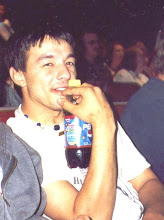Task force to address methamphetamine use in Coolidge, Pinal County (Arizona)
By PRESTON McCONKIE, Staff Writer
Crystal methamphetamine is a drug like no other, and the only way to treat its effect on the community is to convince people never to try it at all - and to lock away those who are addicted.
Those were the conclusions of a 17-person group which assembled May 4 in the Coolidge City Council chambers for a two-hour discussion on meth use in Coolidge and how to combat it. While none said the effort was hopeless, all agreed that meth is a more addictive and destructive drug than any other they have seen, and that traditional treatment approaches appear virtually useless in helping users to quit.
"We have to face the fact that we've probably lost a whole generation," said Jon Thompson, a Pinal County Probation supervisor and one of several Coolidge City Council members who attended the meeting. Thompson said the meth addicts he meets have no desire to quit and are unaffected by mandatory treatment.
"We'll bring them in to test (for drug use) and they have the stuff in their wallet," Thompson said. "They just don't care."
Coolidge Police Chief Jim Palmer said meth had the effect of alienating users from their families, to the extent that parents and grandparents frequently call on police to remove addicts from their homes.
"They finally have to give up on them," Palmer said. "They can't help them, and they (users) continue to victimize their families."
Susan Price, currently principal of the Success Center, said in her 17-year career in Coolidge schools she has seen nothing to compare with meth in its rapidly addicting and mind-destroying effects.
"I have one young man in mind right now who between the ages of 3 and 12 has had a 30-point drop in his IQ," Price said. "That normally means a brain tumor or some systematic problem, but he has all the signs of meth use - the sores and rotten teeth - and you didn't see that with the other (drugs)."
Coolidge Unified School District truant officer Gary Gudgeon said the problem takes deep root as soon as young people get involved in meth - and unfortunately there isn't a sufficient social stigma to deter certain kids from getting in trouble.
"It's like a rite of passage these days," Gudgeon said. "It's a mark of prestige for kids to get caught with meth on their person and spend time in detention."
There is also a culture of excitement that goes along with defiantly bringing the drugs into school, to the point where students who don't even take drugs will become involved in helping users and dealers avoid getting caught.
"They'll hand a baggie from one kid to the next, and pretty soon there are 15, 20 kids involved where there was only one to begin with," Gudgeon said.
Price spoke up in support of the DARE program, as did all others at the meeting, but said an unfortunate side effect of DARE was that some parents had begun deliberately addicting their children to narcotics.
"When we started the DARE program some people were upset because kids were narking on their parents," Price said. "So some people decided if they started their kids on it earlier, they were less likely to rat their folks out. It's hard to believe that people would do that to their kids, but it's reality that they know kids are being educated in the schools about drugs."
See the rest of this story at:
http://www.zwire.com/site/news.cfm?newsid=16686311&BRD=1817&PAG=461&dept_id=222071&rfi=6


0 Comments:
Post a Comment
Subscribe to Post Comments [Atom]
<< Home